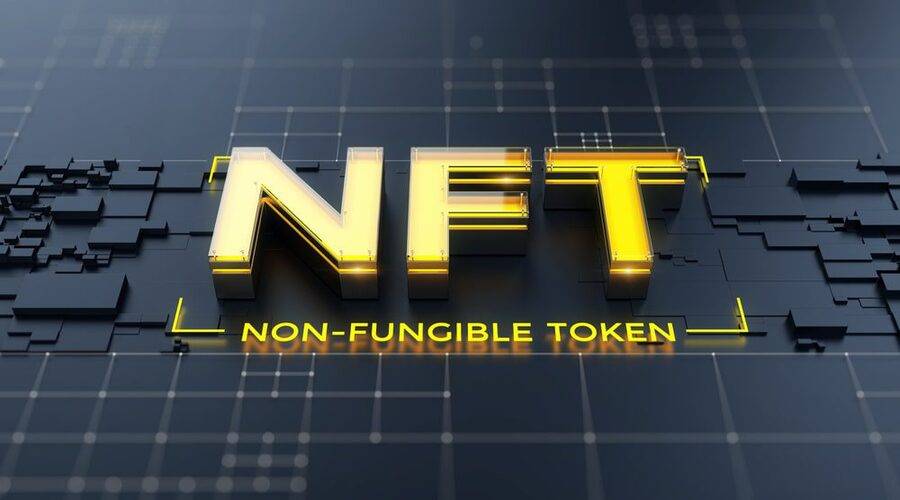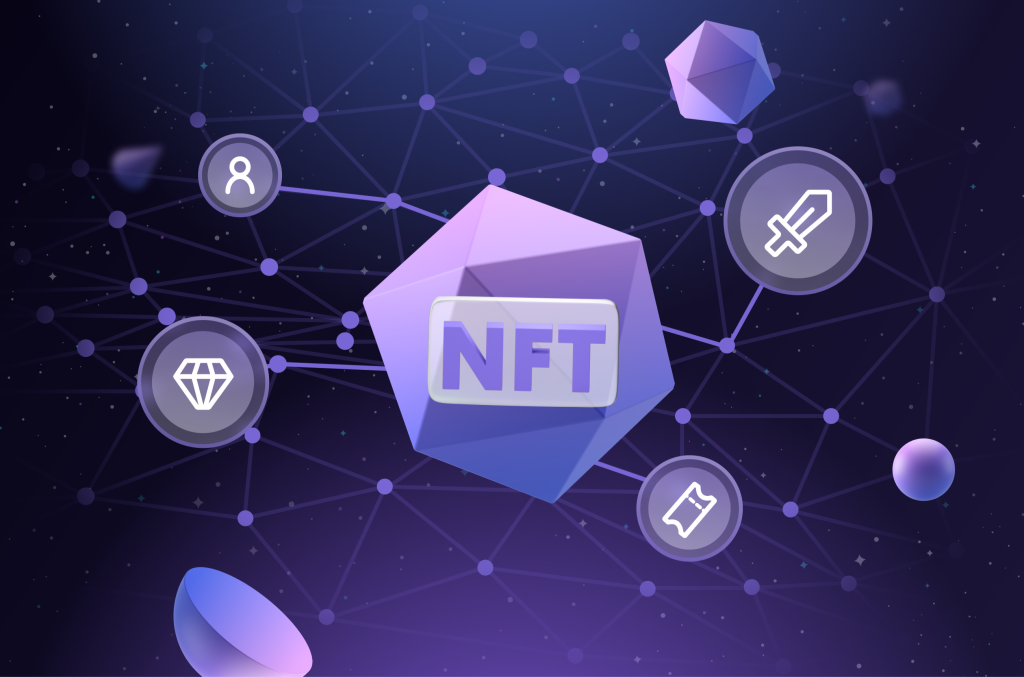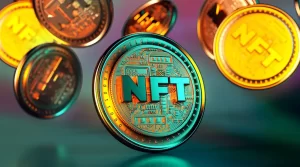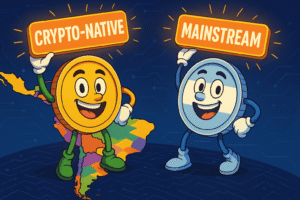NFT Interoperability and Its Potential for Social Impact

NFT Interoperability and Social Impact
Introduction
In recent years, Non-Fungible Tokens (NFTs) have gained significant attention in the digital world. These unique digital assets have revolutionized the concept of ownership and proven to be a game-changer in various industries. NFTs have the potential to go beyond their traditional use in art and collectibles and contribute to social impact initiatives. One critical aspect that enables this potential is NFT interoperability. In this article, we will explore the concept of NFT interoperability, its significance, and how it can drive positive change in society.
Understanding NFT Interoperability
NFT interoperability refers to the ability of different NFTs and blockchain platforms to interact and exchange information seamlessly. Currently, most NFTs are created and traded within specific blockchain ecosystems, such as Ethereum. However, with interoperability, NFTs from different blockchains can communicate with each other, opening up new possibilities and opportunities.
The Significance of NFT Interoperability
NFT interoperability holds immense potential for social impact. It allows for collaboration, cross-platform engagement, and the pooling of resources to address various societal challenges. Here are some ways in which NFT interoperability can make a difference:
1. Enhancing Accessibility and Inclusion
By enabling interoperability, NFTs can reach a wider audience and break down barriers to entry. Individuals who hold NFTs on one blockchain can participate in projects and initiatives on other blockchains, expanding their opportunities for engagement. This inclusivity can create a more diverse and vibrant ecosystem where people from different backgrounds can come together and contribute to social causes.
2. Empowering Artists and Content Creators
NFT interoperability allows artists and content creators to explore new avenues for monetization and exposure. Artists can collaborate across platforms, creating synergies that amplify their reach and impact. Furthermore, interoperable NFTs enable creators to retain ownership and control over their work, ensuring fair compensation and protection of their intellectual property rights.
3. Supporting Charitable Causes
Interoperable NFTs can facilitate charitable initiatives and fundraising campaigns. Nonprofits and organizations can leverage the unique properties of NFTs to incentivize donations, reward contributors, and create memorable experiences for supporters. NFTs can represent exclusive access, limited edition merchandise, or virtual experiences, motivating individuals to contribute to social causes.
4. NFT Interoperability and Environmental Sustainability
One significant concern associated with NFTs is their environmental impact, primarily due to the energy-intensive nature of blockchain networks. However, interoperability can play a role in mitigating this issue. By enabling NFTs to move across blockchains, projects can leverage more energy-efficient networks, reducing the carbon footprint associated with their creation and transactions.
Challenges and Future Outlook
While the potential for NFT interoperability is promising, several challenges need to be addressed. These include technical complexities, standardization of protocols, and establishing trust and security mechanisms across different blockchains. However, as the technology evolves and stakeholders collaborate, these hurdles can be overcome.
Looking ahead, the future of NFT interoperability holds immense possibilities. As more blockchain networks embrace interoperability standards and developers create tools to facilitate seamless interactions, the impact of NFTs on social causes is expected to grow exponentially.
Leveraging NFT Interoperability for Education and Research

NFT interoperability has the potential to revolutionize education and research by providing new avenues for collaboration, sharing knowledge, and incentivizing participation. Here’s how it can make a difference:
1. Collaborative Learning and Research Initiatives
With interoperable NFTs, educational institutions, researchers, and students can collaborate across different blockchain platforms. This collaboration can foster the exchange of ideas, facilitate joint projects, and enable the sharing of research findings. NFTs can be used to represent intellectual property rights, certifications, or even access to exclusive educational content, creating an engaging and rewarding learning environment.
2. Gamification and Incentivization
Interoperable NFTs can introduce gamification elements into education and research. Students and researchers can earn NFTs as rewards for completing assignments, achieving milestones, or contributing valuable insights. These NFTs can hold real-world value, such as discounts on educational resources, priority access to research facilities, or even scholarships. Gamifying education and research incentivizes active participation and enhances the learning experience.
NFT Interoperability for Sustainable Supply Chains
NFT interoperability can play a crucial role in promoting transparency, traceability, and sustainability within supply chains. Here’s how it can be leveraged:
1. Ethical Sourcing and Fair Trade
Interoperable NFTs can be used to verify and track the origins of products, ensuring ethical sourcing and fair trade practices. By representing the journey of a product from its raw materials to the end consumer, NFTs enable consumers to make informed purchasing decisions. This transparency promotes responsible consumption and supports businesses that prioritize sustainability and social impact.
2. Carbon Footprint Monitoring and Offsetting
Blockchain networks associated with NFT interoperability can integrate environmental monitoring tools. NFTs can include data on the carbon footprint of a product or its associated supply chain. This information empowers consumers to choose low-carbon alternatives and encourages businesses to adopt sustainable practices. Additionally, NFTs can facilitate carbon offsetting initiatives, where businesses can trade carbon credits through interoperable platforms, contributing to environmental conservation.
NFT Interoperability for Humanitarian Aid and Disaster Response
Interoperable NFTs can revolutionize humanitarian aid and disaster response efforts, enabling efficient coordination, transparent fund allocation, and impactful interventions. Here’s how it can be applied:
1. Transparent Donation Tracking
NFTs can be utilized to track and verify donations in real-time, ensuring transparency and accountability. Donors can have visibility into how their contributions are utilized, while aid organizations can provide updates on the impact achieved. This transparency builds trust and encourages continued support for humanitarian causes.
2. Interoperable Identification Systems
Interoperable NFTs can facilitate the creation of secure and portable identification systems for displaced populations. These digital identities can hold crucial information such as medical records, educational qualifications, and access to aid services. NFTs provide a tamper-proof and easily verifiable method for individuals to prove their identity and access necessary support during emergencies.
Remember to use appropriate headings and formatting for each subtopic. This additional content will help further expand the article and cover a broader range of subtopics related to NFT interoperability and its potential for social impact.
NFT Interoperability for Intellectual Property Rights
NFT interoperability can revolutionize the management and protection of intellectual property rights. Here’s how it can be leveraged:
1. Cross-Platform Ownership and Licensing
With interoperable NFTs, creators can assert their ownership and license their intellectual property across multiple blockchain platforms. This ensures that their work is protected and recognized in different ecosystems, expanding their reach and potential revenue streams. Additionally, NFT interoperability enables the seamless transfer of ownership, making it easier for creators to sell or transfer their intellectual property rights.
2. Royalty Collection and Transparency
Interoperable NFTs can streamline royalty collection for creators. Whenever an NFT is sold or traded, the smart contract associated with the NFT can automatically distribute royalties to the original creator. This provides creators with a transparent and efficient method of monetizing their work and ensures that they receive fair compensation for its ongoing use.
NFT Interoperability and Virtual Worlds
The concept of interoperable NFTs extends to virtual worlds, creating new possibilities for immersive experiences and digital economies. Here’s how it can be applied:
1. Cross-Platform Avatars and Virtual Assets
With NFT interoperability, users can have a single avatar or set of virtual assets that can be used across multiple virtual worlds. This interoperability breaks down the silos between different virtual environments, allowing users to seamlessly move between them without losing their progress or investments. It fosters a more connected and expansive metaverse where users can explore various virtual realms.
2. Digital Economies and Cross-World Trading
Interoperable NFTs enable cross-world trading and economic interactions. Users can buy, sell, and trade virtual assets, currencies, and collectibles across different virtual worlds, creating vibrant and interconnected digital economies. This fosters a sense of value and ownership within virtual communities and opens up opportunities for entrepreneurship and economic empowerment.
NFT Interoperability and Decentralized Finance (DeFi)
NFT interoperability can intersect with the world of decentralized finance, bringing new opportunities for financial innovation and inclusion. Here’s how it can be applied:
1. Collateralization and Liquidity
Interoperable NFTs can be used as collateral within DeFi protocols, unlocking liquidity for NFT holders. By leveraging the value of their NFTs, individuals can access loans, earn interest, and participate in various DeFi lending and borrowing mechanisms. This enables the monetization of illiquid assets and expands financial opportunities for NFT owners.
2. Fractional Ownership and Investment
NFT interoperability allows for the fractional ownership of high-value assets, making them more accessible for investment. Through interoperable NFTs, individuals can purchase fractional shares of valuable artworks, collectibles, or real estate. This fractionalization democratizes investment opportunities, allowing a broader range of investors to participate in previously exclusive markets.
NFT Interoperability and Digital Identity
Interoperable NFTs have the potential to transform digital identity management, empowering individuals to have control over their personal data and online presence. Here’s how it can be leveraged:
1. Self-Sovereign Identity
Interoperable NFTs can facilitate the concept of self-sovereign identity, where individuals have full control over their digital identities. NFTs can represent verifiable credentials, such as educational qualifications, certifications, or professional achievements. Users can selectively share these NFTs to prove their identity, without relying on centralized authorities, enhancing privacy and security.
2. Personal Data Ownership and Monetization
With interoperable NFTs, individuals can assert ownership over their personal data and choose to monetize it. NFTs can represent data tokens that encapsulate specific data attributes, allowing individuals to sell or license their data directly to interested parties. This empowers individuals to participate in the data economy and have greater agency over their digital footprint.
Conclusion
NFT interoperability has the power to revolutionize the way we address social issues and drive positive change. By fostering collaboration, inclusivity, and innovation, interoperable NFTs can unlock new opportunities for artists, content creators, and organizations to make a difference. As the technology progresses and challenges are overcome, we can expect to witness the transformative potential of NFTs in creating a more equitable and impactful society.

I have been in the industry for over 5 years. I know all the latest news and what is going on with different coins. I write about Bitcoin, Ethereum, Litecoin, and more.








